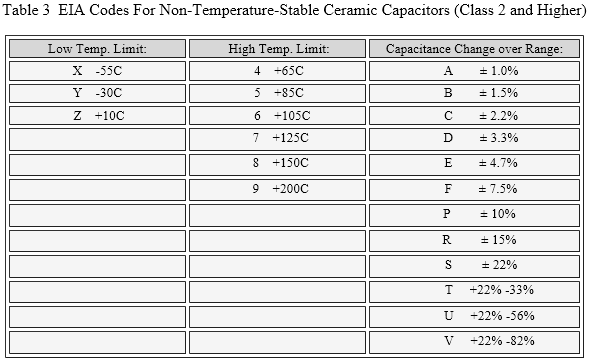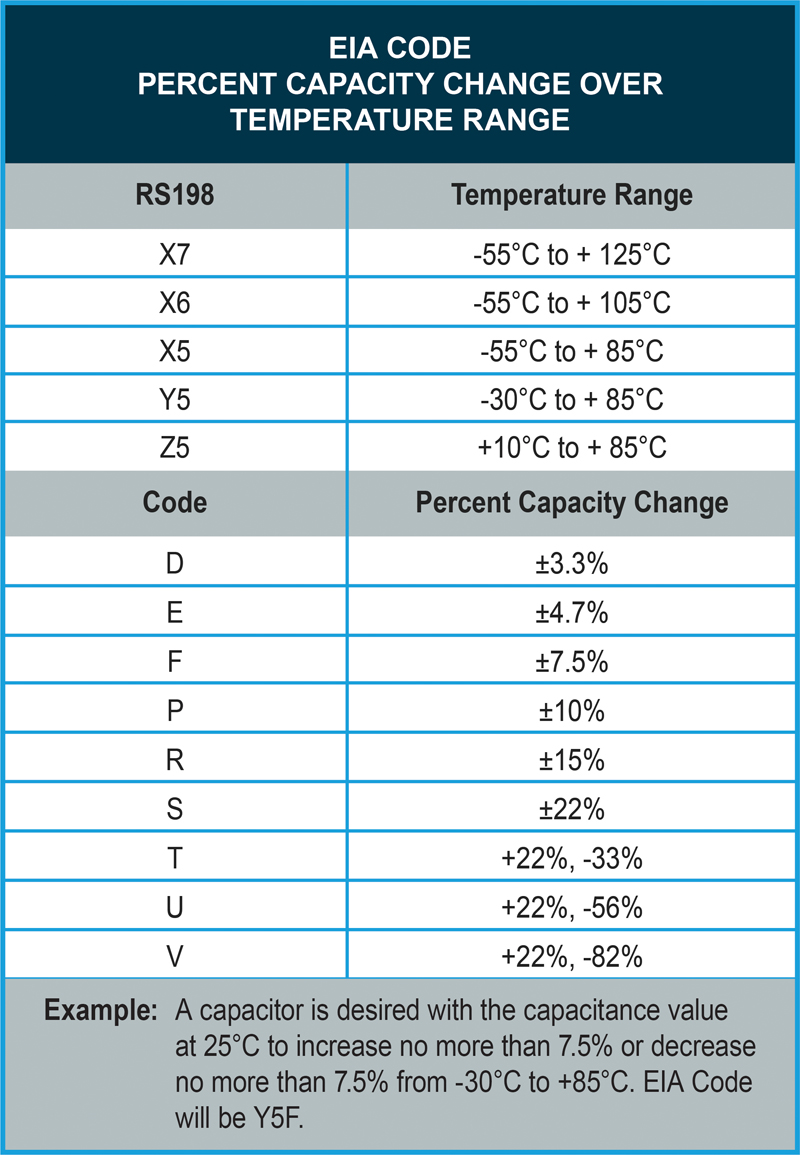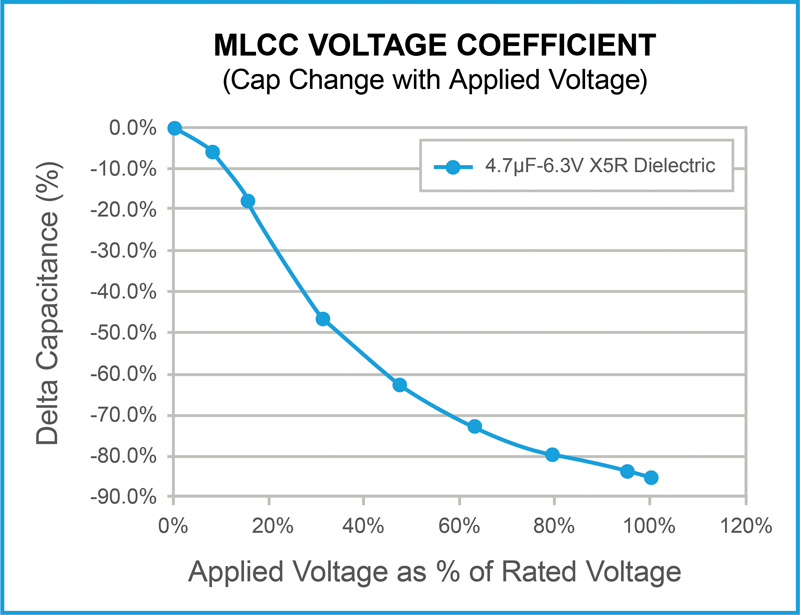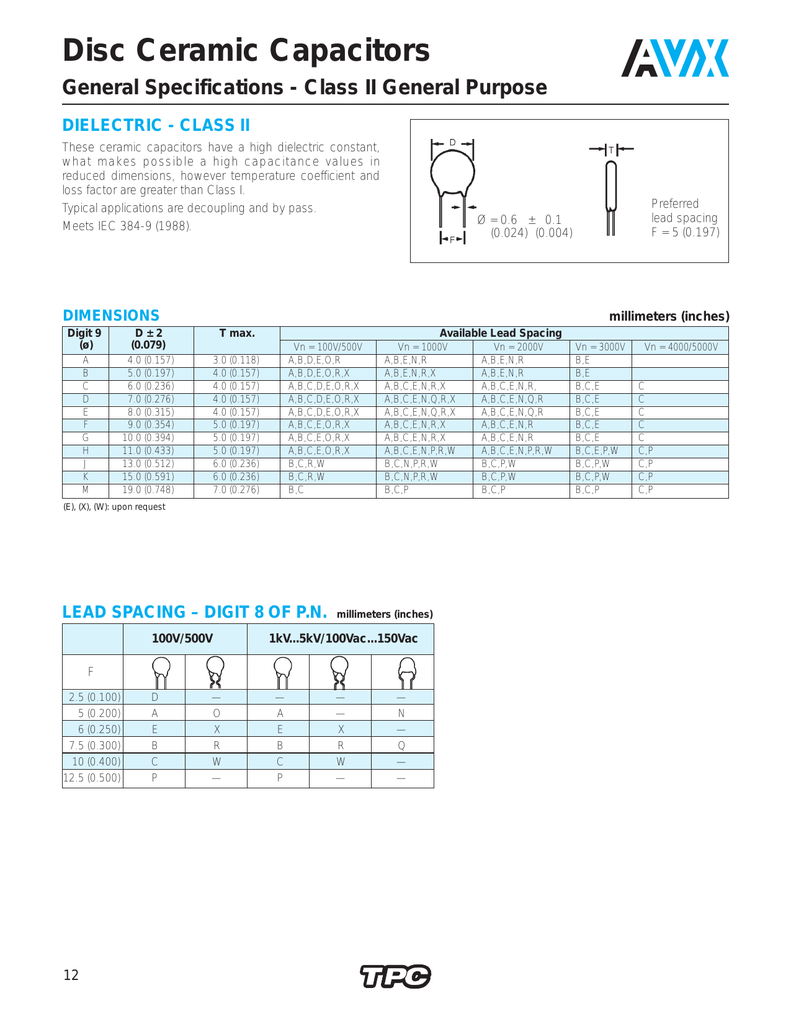Please note that among ceramic capacitors the capacitance especially of capacitors classified as high dielectric constant b x5r r x7r characteristic may differ from the nominal value when a dc voltage is applied.
Voltage coefficient of ceramic capacitors.
At 5v the typical capacitance is 92 9 below nominal or 0 33µf.
Voltage coefficient for class ii ceramic capacitors.
Furthermore in periodic life time tests endurance tests the voltage proof of ceramic capacitors is tested with increased test voltage 120 to 150 of u r to ensure safe construction.
Test voltages related to iec 60384 8 21 9 22.
At 85 c with 0v bias the capacitance decreases by 68 14 from 4 7µf to 1 5µf.
Factors that influence vcc.
Biasing this 6 3v rated capacitor with 5 volts will result in a capacitance that is 14 times smaller than nominal.
Vcc is often noticed while operating close to the rated voltage of the mlcc or where high capacitance is needed in the circuit.
September 29 2015.
Voltage coefficient y5v mlcc 1 0uf y5v 1 20 1 40 1 0uf y5v 16vdc 0805 size mlcc 1 15 1 14 0 98 1 00 v alue 0 62 0 60 0 80 h z capacitance x7r x5r y5v are not suggested for use in circuit applications where stability over voltage or time or temperature are design requirements 0 41 0 30 0 40 1k unstable over vdc 0 24 0 20.
I noted that the dielectric structure of a class ii ceramic capacitor can be envisioned as a collection of domains with internal dipoles that change alignment in response to an applied ac voltage.
Vcc or voltage coefficient of capacitance is a decrease in capacitance under applied dc voltages that happens in in classii and class iii mlccs.




























